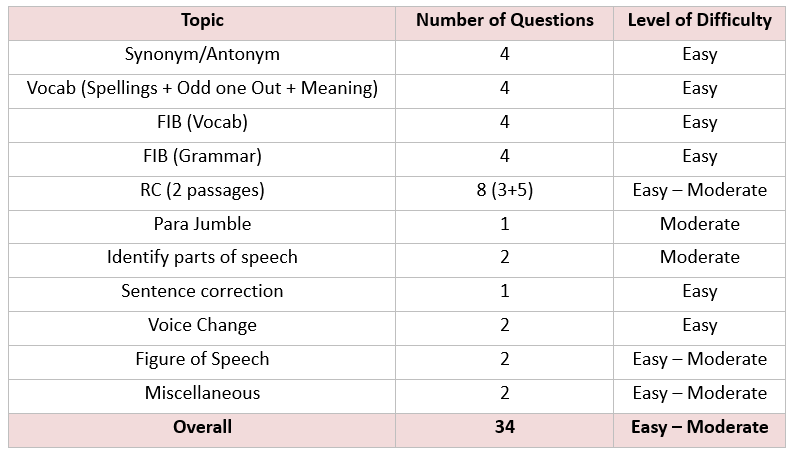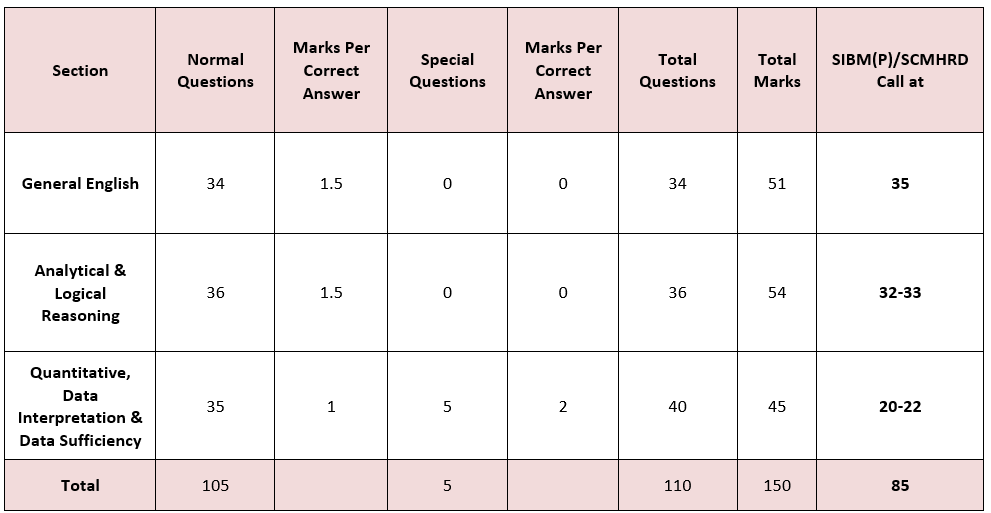SNAP 2019 continued to be an absolutely uninteresting paper. Like it is the case with SNAP every year, there were weird questions and some weird options to go with them. While General English was easy, Quantitative Ability turned out to be a lengthy paper. Overall, the paper was similar to last year give and take a few weird questions where you certainly should not have spent any of your time. This year with the change in the exam structure, there were only three sections viz. General English, Quantitative Ability and Analytical & Logical Reasoning in the paper with 34, 35 and 36 questions in each section respectively. You could have attempted the paper in the sequence of your choice as you were allowed to move from one section to another section. The total time given for the paper was 120 minutes.
A detailed analysis of the paper is as follows:
General English:
The General English section was dominated by vocabulary questions. There were only two RCs like last year but this time one of them had 3 questions while the other had 5 questions, which made it 8 questions from RCs. Except for 1 RC, the entire General English was a cakewalk and one should have got done with it really quickly.
This time around, the vocabulary questions weren’t as difficult as it was last year. Compared to the vocabulary words that figured in the paper last year (for example: “tergiversate”), this year’s vocabulary was definitely easier.
The FIB questions could have been answered by using common sense. The grammar-based questions were easy as well. However, the two questions on voice change were extremely easy.
Overall, it was an easy section to attempt. An attempt of 25-26 in 20-25 minutes with 90% plus accuracy is desirable.
A detailed break-up of the question patterns is as follows:

Quantitative Ability:
The quantitative ability section turned out to be much more time consuming as compared to previous years. The paper was dominated by questions from Time, Speed and Distance, Geometry and Modern Math. The lack of a calculator meant that estimates had to be used while answering quite a few questions.
Some of the questions were long to read and one would wonder why wouldn’t the question-setter write it in fewer words.
While the questions weren’t very difficult it was important for students to spend a good amount of time on this section. An attempt of 18-20 in 45 minutes with 90% accuracy would be ideal.
A detailed break-up of the question patterns is as follows:

Logical and Analytical Reasoning
After including WhatsApp jokes in their SNAP 2015 paper, and a Pinterest post in SNAP 2018, this years paper was not as weird.
Logical Reasoning was quite similar to previous years with some of the questions being quite boring and lengthy. There were a couple of caselets which were quite easy and should be easy marks for the test takers. The proportion of verbal reasoning questions was quite low and analytical reasoning questions dominated.
A good score in Logical Reasoning would be around 32-33.
A detailed break-up of the question patterns is as follows:

Overall
Overall the paper was similar to last year, and students would have done well to attempt about 80-85 questions with 80-85% accuracy.

